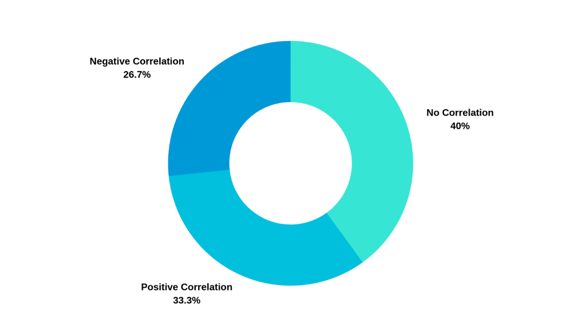Courts do not generate their own workload - they respond to other organizations and the public. For example, on the criminal side, a court is a "downstream" organization, meaning it must respond to the initiatives of prosecutors and law enforcement. On the civil side, courts are responsive to the filings of citizens, businesses, and the government. In performing courthouse planning, we study trends in the local and regional area and have a dialogue with judges and court managers on how these trends are impacting the court. Inevitably, population comes up in the discussions. When population is increasing in surrounding areas, it is logical to assume that court workload will also increase.
In fact, I have seen this logic numerous times in reviewing previous courthouse needs assessments and master plans over the past 30 years. I often see data predicting future judges and/or cases based almost solely on the increase in population. Perhaps the most popular display I’ve seen is an analysis of cases and judges per 100,000 people. However, is this logic accurate? Do court cases and judges consistently increase with population growth?
It is generally true that when courts have more people within their jurisdiction, they typically have more filings than jurisdictions with a smaller population base. However, population increases and declines don’t necessarily result in corresponding caseload increases and declines, although changes in population may play a role in the types of filings in a jurisdiction. In my experience as a court planning consultant, I have found no clear-cut correlation between population and the overall number of case filings. I am not attempting to make hard and fast determinations about the correlation between population and case filings, but would like to share some of my observations.
Study of Civil Filings in 30 Courts
We recently conducted a study of civil filings in 30 court jurisdictions with varying levels of civil caseload, and found some interesting conclusions. The study included 20 years of both civil filings and population data.
Out of the 30 court jurisdictions in the study, 18 (60%) showed a statistically significant correlation (at the 0.05 level) between population and filings, meaning that as population changed, there was a corresponding change in civil filings. The remaining 40% showed no correlation. However, almost half of the courts with a statistically significant correlation had a negative, rather than positive, correlation – a surprising finding.
For 10 of the 18 courts that had a statistically significant correlation, as population either increased or decreased, the civil filings followed the same trend (a positive correlation). For the remaining 8 courts, the trend was the opposite – as the population increased or decreased, civil filings responded in the opposite direction (a negative correlation). The pie chart below summarizes the findings for the sample of 30 courts as a whole.

Relationship between population and civil caseload - a study of 30 courts
Reasons Behind the Trends
Let’s examine some of the potential reasons for both positive and negative correlations between population and civil filings.
The positive correlation is the logical one that many courts believe: as the population in a court jurisdiction increases, there are more people and businesses to file cases, and civil filings increase. Therefore, it is also logical to assume that as the population decreases, civil filings will also decrease. In this case, filings are a function of the population levels in court jurisdictions.
What about the negative correlation? As populations decrease, civil filings can increase or vice versa. But is it predictable? Not really. I have heard the following anecdotal comments when conducting courthouse planning:
- As the average age of the population increases, civil cases also tend to increase (regardless of overall population levels) as locations with a high number of retirees typically have more civil filings involving issues such as wills, living trusts, mental health matters, guardianships, financial exploitation, and claims regarding eligibility for government services. Furthermore, case filings involving enforcement of the Americans with Disabilities Act have been increasing in recent years and are often concentrated in areas with an aging population. Where the aging baby boomers (who do not appear to be headed to traditional retirement places such as Florida and Arizona) ultimately wind up could impact civil filings in certain regions.
- Population increases are often tied to a region’s shift from an agricultural-based to a professional services-based economy. A court may experience an increase in civil cases as new businesses relocate to the area and as startups fail to take hold.
- As a population declines, the regional economy can experience a downturn. Businesses and residents struggling with the changing economic landscape can generate higher civil filings, including cases involving foreclosures, bad debts, failed business deals.
As seen in the above examples, the relationship between population and civil caseload is often more complex than it may first appear.
The same is true of criminal cases. Here are some of the anecdotal reasons for criminal case filing changes that we have heard over the years:
- As population increases, criminal cases increase, especially as the population becomes denser, more diverse in ethnicity, and has a higher concentration of young adult males.
- As the population increases, there is more economic prosperity that leads to a reduction in criminal cases. However, on the flip side, illegal immigration cases typically increase during times of economic expansion.
- As the population declines, the jurisdiction can suffer from poverty and lack of investment and opportunity, which can lead to more crime and criminal filings. Baltimore City is an example of this. As population has experienced year after year of decline, the violent crime rate has reached a historical high, despite a nationwide decline in violent crime.
As with civil filings, these anecdotal statements are also conflicting at times.
Takeaways
Certainly, a study of 30 court jurisdictions and anecdotal evidence gleaned from court planning representatives is not a definitive study with ironclad conclusions. However, having performed needs assessments in over 1,000 courts, population has been analyzed and discussed as part of the planning process in every location. In my opinion, this study of 30 courts echoes the issues that we have found across our work for all courts: there is no clear-cut pattern between population and filings – regardless of the filing type.
So, should population even be considered as a way of forecasting filings for the purposes of courthouse planning? My answer to this is that numbers alone do not tell the story. Yes, population projections should be considered but only in the context of the qualitative drivers of population growth. A look at population trends and cohorts, especially age, gender, ethnicity, and density can help to inform caseload forecasts. However, it is important to also examine other external variables that may impact filings, such as economic considerations including industry growth and decline, geographic differences in court jurisdictions, legislative acts that often have a long-term impact on filings, and political leadership and policy that determine how different enforcement (prosecutorial and otherwise) initiatives are implemented. Taking a look at a wide range of factors impacting caseload results in more reliable projections.
The purpose of courthouse planning is to determine the current and future needs that must be accommodated in a courthouse. It is the hope that every needs assessment will serve as a roadmap to guide the court in making reasonable conclusions regarding its space needs. There is no such thing as a crystal ball, no matter how complex the statistics used. For this reason, I find that one of the more powerful elements in a courthouse needs assessment is to clearly document the planning assumptions.
When the assumptions are clear, they can be viewed months and years after the assessment to determine whether the needs assessment is still a reliable roadmap. Every courthouse assessment should have assumptions relating to population and workload. However, every needs assessment should also steer clear of predicting workload and judges solely based on the number of people in a court jurisdiction. As we have seen, there are many reasons for caseload growth and decline, and population is only one issue to consider.
I welcome your thoughts on this issue. What have you learned about the connection between population and case filings through your experience? Perhaps we can share our experiences to reach a better understanding of how population does – or doesn’t – drive caseload.





.jpg)
.jpg)
.jpg)
.jpg)
.jpg)
.jpg)


-1.jpg)
.jpg)
.jpg)
.jpg)

